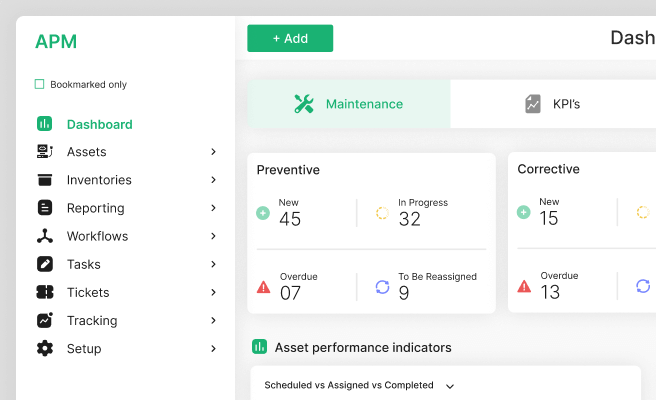Sustainable Innovation
<p>Sustainable innovation is a transformative approach that integrates environmental, social, and economic considerations into the development of new products, services, and processes. It is a crucial concept in today's world, where the pressure to address climate change and resource scarcity is mounting. In the realm of digital product design, sustainable innovation ensures that products are not only functional and aesthetically pleasing but also minimize environmental impact throughout their lifecycle.</p>
<p>The historical context of sustainable innovation can be traced back to the broader sustainability movement, which gained momentum in the late 20th century. The Brundtland Report of 1987, formally known as "Our Common Future," introduced the concept of sustainable development, defining it as meeting the needs of the present without compromising the ability of future generations to meet their own needs. This laid the groundwork for sustainable innovation across various industries, including digital design.</p>
<h2>Components of Sustainable Innovation</h2>
<p>Sustainable innovation in digital product design can be broken down into several key components:</p>
<ul>
<li><strong>Eco-friendly Materials:</strong> Utilizing materials that have a lower environmental impact, such as recycled or biodegradable materials, reduces the product's ecological footprint.</li>
<li><strong>Energy Efficiency:</strong> Designing products that consume less energy during use and production, thus reducing greenhouse gas emissions.</li>
<li><strong>Lifecycle Thinking:</strong> Considering the entire lifecycle of a product, from raw material extraction to disposal, to minimize environmental impact at each stage.</li>
<li><strong>Social Responsibility:</strong> Ensuring that the product design process respects human rights and labor standards, contributing positively to society.</li>
</ul>
<h2>Benefits of Sustainable Innovation</h2>
<p>Adopting sustainable innovation practices in digital product design offers numerous benefits:</p>
<ul>
<li><strong>Environmental Impact:</strong> Reducing waste, conserving resources, and lowering carbon footprints contribute to a healthier planet.</li>
<li><strong>Brand Reputation:</strong> Companies that prioritize sustainability often enjoy enhanced brand loyalty and reputation, attracting eco-conscious consumers.</li>
<li><strong>Regulatory Compliance:</strong> Adhering to environmental regulations and standards can prevent legal issues and fines.</li>
<li><strong>Cost Savings:</strong> Efficient use of resources and energy can lead to significant cost savings over time.</li>
</ul>
<h3>Challenges in Implementing Sustainable Innovation</h3>
<p>Despite its benefits, sustainable innovation is not without its challenges:</p>
<ul>
<li><strong>Initial Costs:</strong> Investing in sustainable materials and processes can be costly upfront, though it often pays off in the long run.</li>
<li><strong>Technological Constraints:</strong> Developing eco-friendly technologies and materials may require significant research and development efforts.</li>
<li><strong>Market Demand:</strong> There may be a need to educate consumers and create demand for sustainable products.</li>
</ul>
<h3>Case Study: Climate Tech</h3>
<p>One of the sectors exemplifying sustainable innovation is climate tech. For instance, <a href="https://www.climeworks.com" style="color: #2896FF; text-decoration: underline;">Climeworks</a> develops direct air capture technology to remove CO2 from the atmosphere. Their product design emphasizes energy efficiency and scalability, ensuring that the environmental benefits outweigh the resources used in production.</p>
<p>Another example is <a href="https://www.tesla.com" style="color: #2896FF; text-decoration: underline;">Tesla</a>, which integrates sustainable innovation into their electric vehicles by using eco-friendly materials and enhancing battery technology for longer life cycles and better recyclability.</p>
<h2>Practical Steps for Sustainable Innovation in Digital Product Design</h2>
<p>To integrate sustainable innovation into digital product design, consider the following steps:</p>
<ul>
<li><strong>Conduct a Lifecycle Assessment:</strong> Evaluate the environmental impact of a product from cradle to grave to identify areas for improvement.</li>
<li><strong>Use Sustainable Materials:</strong> Opt for recycled, biodegradable, or low-impact materials whenever possible.</li>
<li><strong>Design for Energy Efficiency:</strong> Ensure that your product consumes minimal energy throughout its lifecycle.</li>
<li><strong>Implement Circular Economy Principles:</strong> Design products for durability, repairability, and recyclability to extend their lifespan and reduce waste.</li>
<li><strong>Engage Stakeholders:</strong> Collaborate with suppliers, customers, and other stakeholders to promote sustainability throughout the supply chain.</li>
</ul>
<p>In summary, sustainable innovation in digital product design is essential for creating products that are not only high-performing but also environmentally and socially responsible. By embracing eco-friendly materials, energy efficiency, and lifecycle thinking, companies can drive positive change while reaping significant benefits.</p>
<p>Learn more about improving your sustainable design strategies by exploring resources from <a href="https://www.greenbiz.com" style="color: #2896FF; text-decoration: underline;">GreenBiz</a> and <a href="https://www.sustainablebrands.com" style="color: #2896FF; text-decoration: underline;">Sustainable Brands</a>.</p> <p>We’re using the power of design to increase the adoption of climate technologies and innovation. View our work in climate to know more on how we can support your vision. <a href="https://www.whatifdesign.co/climate" style="color:#2896FF; text-decoration:underline;">View our climate projects</a>.</p> <p>Increase user engagement that converts your demos into sales. Optimise your UX strategies with our audits.
<p>Fill out the <a href="https://tally.so/r/n97pxQ" style="color:#2896FF; text-decoration:underline;">UX Audit form</a> to get started. Ready to discuss your needs? <a href="https://cal.com/akhilak/what-if-design?duration=25" style="color:#2896FF; text-decoration:underline;">Book a consultation call</a> with us today.</p></p>

Let's scale your impact with great design.
Free consultation, no sales pitch
Thank you! Your submission has been received!
Oops! Something went wrong while submitting the form.
Let’s talk
Nothing great is built alone.
Let’s connect about your vision, our work and how we can collaborate.
Get in touch

